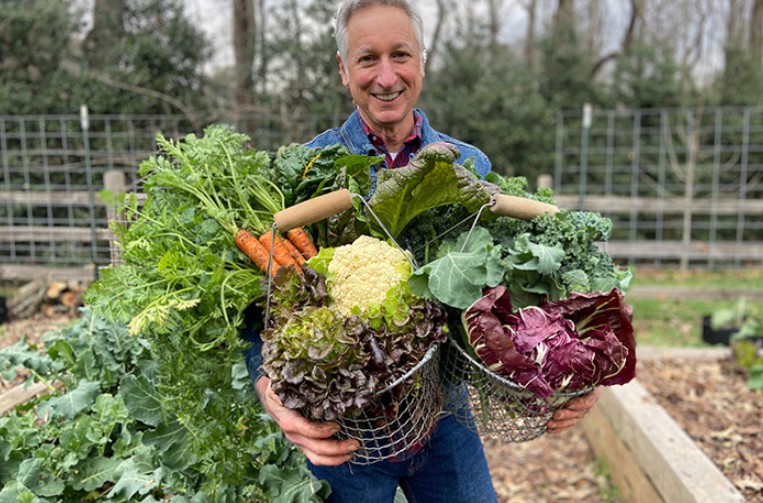
Introduction
Growing your own vegetables is a deeply satisfying and rewarding experience, but achieving a big, bountiful harvest takes more than just planting seeds and hoping for the best. Whether you’re a beginner or an experienced gardener, understanding the right techniques and strategies can make all the difference in how much your garden produces.
In this post, we’ll share 10 professional vegetable gardening tips designed to help you maximize your yield and enjoy a flourishing garden season. From choosing the perfect location and enriching your soil to smart watering and pest control methods, these expert tips will guide you step-by-step toward bigger, healthier vegetable harvests. Get ready to transform your garden into a thriving source of fresh, homegrown produce!
Choose the Right Location with Plenty of Sunlight
One of the most important factors for a successful vegetable garden is selecting the right location—specifically, a spot that receives plenty of sunlight. Most vegetables require at least 6 to 8 hours of direct sunlight each day to grow strong and produce abundant fruits and vegetables. Sunlight powers photosynthesis, the process that allows plants to convert light into energy, so without enough light, your plants will struggle to thrive.
When choosing your garden site, look for an area that is open and unobstructed by buildings, trees, or fences that cast shade during the day. Good air circulation is also important to prevent diseases and help plants dry faster after watering or rain. Additionally, having easy access to water will make maintenance simpler and more efficient.
If your available space has limited sunlight, consider planting shade-tolerant vegetables like leafy greens, herbs, or root vegetables, which can handle partial shade better than sun-loving crops. By carefully selecting a sunny location, you set the foundation for a healthy, productive vegetable garden.
Invest in Quality Soil and Amend it Regularly
Healthy, fertile soil is the cornerstone of a thriving vegetable garden. Investing time and effort into improving your soil will pay off with stronger plants and bigger harvests. Start by testing your soil to understand its pH level and nutrient content. Most vegetables prefer soil that is slightly acidic to neutral, with a pH between 6.0 and 7.0.
To boost soil quality, regularly add organic matter such as compost, well-rotted manure, or leaf mold. These natural amendments improve soil structure, increase moisture retention, and provide essential nutrients that plants need to grow vigorously. Good soil drainage is also vital—avoid heavy clay soils that hold too much water, or sandy soils that drain too quickly.
By consistently amending your soil, you create a rich, balanced environment that supports healthy root development and robust vegetable growth. Remember, healthy soil means healthy plants—and that leads to bigger, more bountiful harvests.
Plan Your Garden Layout for Maximum Space and Yield
Efficient garden planning is key to getting the most out of your vegetable patch, especially if space is limited. Thoughtful layout helps you maximize every square foot and encourages healthy plant growth. One popular method is square-foot gardening, which divides your garden into small, manageable sections where you can plant a variety of crops close together without overcrowding.
Consider companion planting, which pairs plants that benefit each other when grown nearby. For example, planting basil next to tomatoes can improve flavor and help repel pests. Crop rotation is another essential practice—changing the location of plant families each season helps prevent soil nutrient depletion and reduces the risk of disease buildup.
Also, think vertically by growing climbing plants like beans or cucumbers on trellises. Place taller plants on the north side of your garden so they don’t shade shorter ones. By planning your garden layout carefully, you’ll create a productive, organized space that yields abundant vegetables throughout the growing season.
Select High-Yield and Disease-Resistant Vegetable Varieties
Choosing the right vegetable varieties can significantly impact the success of your garden and the size of your harvest. Opting for high-yield varieties ensures that your plants produce more fruits or vegetables per plant, giving you a bigger return on your gardening efforts. These varieties are often bred specifically to thrive in home gardens and deliver abundant crops.
Equally important is selecting disease-resistant varieties. Plants that are naturally resistant to common diseases in your area require less chemical intervention and are less likely to suffer from infections that reduce yield or ruin your harvest. This not only makes gardening easier but also promotes healthier, more vigorous plants.
Before planting, research which varieties perform best in your climate and soil conditions. Seed catalogs, local garden centers, and extension services often provide recommendations tailored to your region. By starting with strong, resilient plants, you set the stage for a productive, low-maintenance vegetable garden with big, healthy harvests.
Practice Proper Watering Techniques
Watering is one of the most critical aspects of vegetable gardening, and doing it correctly can make a huge difference in your harvest size. Most vegetable plants need about 1 to 1.5 inches of water per week, but the key is not just how much you water, but how and when you do it.
Water deeply and less frequently to encourage roots to grow strong and reach deeper into the soil. Shallow, frequent watering can lead to weak root systems and plants that are more susceptible to drought stress. The best time to water is early in the morning, which allows plants to absorb moisture before the heat of the day and reduces the risk of fungal diseases caused by prolonged wet leaves overnight.
Using drip irrigation or soaker hoses is highly effective because these methods deliver water directly to the soil around the plant roots, minimizing water waste and keeping foliage dry. Avoid overhead sprinklers whenever possible, as wet leaves can promote disease.
By practicing proper watering techniques, you help your vegetables develop healthy roots, avoid water stress, and ultimately produce bigger, tastier harvests.
Mulch to Retain Moisture and Control Weeds
Mulching is a simple yet powerful gardening practice that benefits your vegetable garden in multiple ways. Applying a layer of mulch around your plants helps retain soil moisture by reducing evaporation, which means your garden requires less frequent watering—especially important during hot, dry periods.
Mulch also acts as a natural weed barrier, suppressing unwanted plants that compete with your vegetables for nutrients, water, and sunlight. By minimizing weed growth, your vegetables can grow stronger and healthier without the stress of competition.
Organic mulches such as straw, shredded leaves, grass clippings, or wood chips not only improve moisture retention and weed control but also enrich the soil as they break down, adding valuable nutrients and improving soil structure.
For best results, apply mulch in a 2-3 inch layer around your plants, taking care to keep it a few inches away from stems to prevent rot. Mulching not only saves time and effort but also supports bigger, healthier vegetable harvests throughout the season.
Use Fertilizers Wisely to Boost Growth
Fertilizers provide essential nutrients that help your vegetable plants grow strong and produce abundant crops. However, using fertilizers wisely is crucial—too little can stunt growth, while too much can cause excessive foliage with fewer fruits or even damage your plants.
Start by understanding the nutrient needs of your specific vegetables. Most require a balanced supply of nitrogen (for leafy growth), phosphorus (for root and flower development), and potassium (for overall plant health and fruit quality). Organic options like compost, fish emulsion, or well-rotted manure release nutrients slowly and improve soil health over time.
Apply fertilizers according to package instructions and avoid overfeeding. Using slow-release fertilizers or regular liquid feeds during the growing season can help maintain steady nutrient availability. Remember to water your plants after fertilizing to help nutrients penetrate the soil.
By feeding your garden thoughtfully and appropriately, you encourage vigorous plant growth, stronger roots, and larger, more flavorful vegetable harvests.
Control Pests and Diseases Naturally
Keeping pests and diseases at bay is essential for a healthy vegetable garden and big harvests, but it’s best to avoid harsh chemicals whenever possible. Natural pest and disease control methods protect your plants while preserving beneficial insects and the environment.
Start by encouraging beneficial insects like ladybugs, lacewings, and predatory wasps, which prey on harmful pests such as aphids and caterpillars. Planting flowers like marigolds, nasturtiums, and herbs such as basil and mint can attract these helpful insects and act as natural pest repellents.
Use physical barriers like row covers, nets, or collars to protect young plants from insect damage. Regularly inspect your plants for early signs of disease or infestation, and remove any affected leaves or plants promptly to prevent spread.
Practicing good garden hygiene—such as cleaning tools, rotating crops, and avoiding overhead watering—reduces disease risk. Homemade sprays using ingredients like neem oil, garlic, or insecticidal soap can also be effective and safe for your garden.
By adopting natural pest and disease control methods, you create a balanced ecosystem in your garden that supports strong, healthy vegetables and bountiful harvests.
Support Your Plants with Proper Staking and Pruning
Providing physical support and regular pruning are essential practices that help your vegetable plants grow stronger and produce higher yields. Many vegetables, such as tomatoes, beans, and cucumbers, benefit from staking, trellising, or caging, which keeps plants upright, improves air circulation, and prevents fruits from touching the soil where they might rot or attract pests.
Choose the right type of support based on the plant’s growth habit—for example, tall stakes for indeterminate tomatoes or trellises for climbing beans. Properly securing your plants prevents breakage and makes harvesting easier.
Pruning is equally important, especially for crops like tomatoes and peppers. Removing suckers, dead leaves, and overcrowded growth directs the plant’s energy toward fruit production rather than excessive foliage. Pruning also improves airflow, reducing the risk of fungal diseases.
Together, staking and pruning create a healthier growing environment, helping your vegetables thrive and deliver bigger, better harvests.
Harvest at the Right Time for Peak Flavor and Yield
Knowing when to harvest your vegetables is just as important as how you grow them. Picking your produce at the right time ensures the best flavor, texture, and maximum nutritional value. Harvest too early, and vegetables may be small or bland; wait too long, and they can become overripe, tough, or bitter.
Each vegetable has its own signs of readiness—tomatoes should be fully colored and slightly soft, beans should snap easily when bent, and leafy greens are best picked before they become tough or bitter. Regularly checking your garden helps you catch produce at its peak.
Timely harvesting also encourages plants to keep producing. For many vegetables, such as cucumbers, zucchinis, and beans, frequent picking signals the plant to generate more fruits, leading to a longer and more abundant harvest season.
By harvesting at the perfect moment, you’ll enjoy fresh, flavorful vegetables while maximizing the yield of your garden.
Conclusion
Growing a bountiful vegetable garden takes thoughtful planning, care, and a few expert strategies. By choosing the right location, investing in quality soil, selecting the best plant varieties, and practicing proper watering, fertilizing, and pest control, you set yourself up for success. Supporting your plants and harvesting at the right time further boosts your garden’s productivity.
Implementing these 10 pro vegetable gardening tips will help you achieve bigger, healthier harvests season after season. With patience and dedication, your garden can become a rewarding source of fresh, homegrown vegetables that nourish both body and soul. Get started today and enjoy the satisfying experience of growing your own food!








